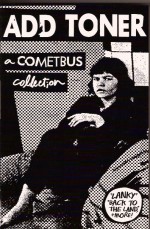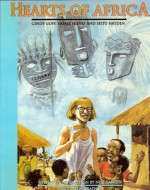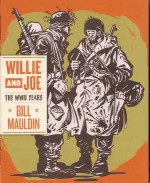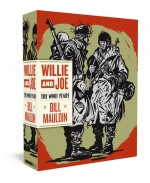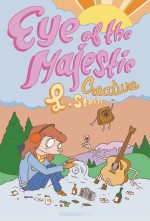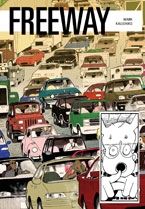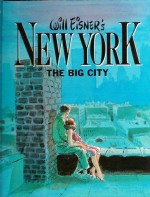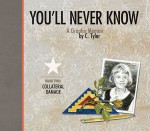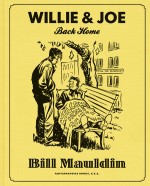
By Bill Mauldin (Fantagraphics Books)
ISBN: 978-1-60699-351-4
Throughout World War II William Henry “Bill†Mauldin fought “Over There†with the United States Infantry whilst producing cartoons about the fighting men and for the fighting men. He told as much of the real nature of the war as his censors and common sense would allow and became an unwilling international celebrity as much because of his unshakable honesty as his incredible artistic talent.
He was in controvertibly one of the guys and American soldiers and civilians loved him for it. During his time in the service he produced cartoons for the folks back home and intimately effective, authentic and quirkily morale-boosting material for military publications 45th Division News, Yank and Stars and Stripes.
They mostly featured two slovenly “dogfaces†– a term he made his own and introduced to the world at large – giving a trenchant and acerbically enduring view of the war from the point of view of the poor sods ducking bullets in muddy foxholes and surviving shelling in the ruins of Europe.
Willie and Joe, to the dismay of much of the Army Establishment, gave an honest overview of America’s ground war. In 1945 a collection of his drawings, accompanied by a powerfully understated and heartfelt documentary essay, was published by Henry Holt and Co. Up Front was a sensation, telling the American public about the experiences of their sons, brothers, fathers and husbands in a way no historian would or did. A biography, Back Home, followed in 1947.
Willie even made the cover of Time magazine in 1945, when 23 year old Mauldin won his first Pulitzer Prize. Like so many other returning soldiers, however, Mauldin’s hard-won Better Tomorrow didn’t live up to its promise…
Mauldin’s anti-war, anti-Idiots-in-Charge, anti-bigot views never changed but found simply new targets at home. However, during the earliest days of the Cold War and despite being a bone fide War Hero, Mauldin’s politically strident cartoons fell ever more out of step with the New America: a place where political expediency allowed racists to resume repressing ethnic sections of the nation now that their blood and sweat were no longer needed to defeat the Axis; a nation where women were expected to surrender their war-time freedoms and independences and become again servants and baby machines, happy to cook suppers in return for the new labour-saving consumer goods America now needed to sell, sell, sell: a nation far too eager to forget the actual war and genuine soldiers in favour of massaged messages and conformist, inspirational paper or celluloid heroes.
The New America certainly didn’t want anybody rocking their shiny new boat…
When Sergeant Bill Mauldin mustered out in 1945 he was notionally on top of the world: celebrity hero, youngest Pulitzer Prize winner in history, with a lucrative 3-year syndicated newspaper contract and Hollywood clamouring for him.
Unfortunately, the artist was as dedicated to his ideals as to his art. As soon as he became aware of the iniquities of the post-war world he went after them, using his newspaper cartoon as a soapbox, Mauldin attacked in bitterly brilliant barrages the maltreatment and sidelining of actual soldiers (during the country’s entire involvement in WWII less than 10% of military men actually fought, or even left their home country) whilst rear-echelon brass seemed to increasingly reap the benefits and unearned glory of the peace.
The ordinary enlisted men and veterans were culture-shocked, traumatised, out of place and resented by the public who blamed them disproportionately for the shortages and “suffering†they had endured. Black and Japanese Americans were reduced to second class citizens and America’s erstwhile allies demonised, whilst everywhere politicians and demagogues were rewriting recent history for their own advantage… His fondest wish had been to kill the iconic dogfaces off on the final day of World War II, but Stars and Stripes vetoed it, and the demobbed survivors moved into a world that had changed incomprehensibly in their absence…
Always ready for a fight, Mauldin’s peacetime Willie and Joe became a noose around the syndicate’s neck as the cartoonist’s acerbic, polemical and decidedly non-anodyne observations perpetually highlighted the iniquities and stupidities inflicted on returning servicemen, attacked self-aggrandising politicians, advocated such socialist horrors as free speech, civil rights and unionisation, affordable public housing and universal medical care for everybody – no matter what their colour, gender or religion. He even declared war on the Ku Klux Klan, American Legion and red-baiting House UnAmerican Activities Commission: nobody was too big. When the Soviet Union and United Nations betrayed their own ideological principles Mauldin went after them too…
An honest broker he had tried to quit early, but the syndicate held him to his contract. Trapped in a situation that increasingly stifled his creative urges and muzzled his liberal/libertarian sensibilities, he refused to toe the line and his cartoons were incessantly altered and reworked. During six years of War service his cartoon had been censored three times; now the white paint and scissors were employed by rewrite boys almost daily…
The movie Up front – which Mauldin wanted to reflect the true experience of the war – languished unmade for six years until a sappy flimsy comedy bearing the name was released in 1951. The intended screenplay by Mauldin, John Lardner and Ring Lardner Jr., disappeared, deemed utterly unsuitable and unfilmable until much of its tone reappeared in Lardner Jr.’s 1970 screenplay M*A*S*H…
As the syndicate bled clients, mostly in segregationist states, and contemplated terminating his contract, Mauldin began simultaneously working for the New York Herald-Tribune and with a new liberal outlet changed his tactics in the Willie and Joe feature: becoming more subtle and less bombastic. He still picked up the best of enemies however, adding J. Edgar Hoover and the FBI to the roster of declaimers and decriers…
When his contract finally ended in 1948, neither side wanted to renew. Mauldin left the business to become a journalist, freelance writer and illustrator. He was a film actor for awhile (appearing in Red Badge of Courage with Audie Murphy among other movies), a war correspondent during the Korean Conflict and an unsuccessful candidate for Congress in 1956.
He only finally returned to newspaper cartooning in 1958 in a far different world and worked for the St. Louis Post-Dispatch before moving to the Chicago Sun-Times, winning another Pulitzer and a Reuben Award for his political cartoons
He retired in 1991 after a long, glittering and properly- appreciated career. He only drew Willie and Joe four times in that entire period (for an article on the “New Army†in Life magazine; for the funerals of “Soldier’s Generals†Omar Bradley and George C. Marshall and to eulogize Milton Caniff).
This magnificent hardback companion volume to Willie and Joe: the WWII Years covers the period of work from July 31st 1945 to 31st December 1948, supplemented by a brilliant biographical introduction from Todd DePastino: a superb black and white compendium collecting the bittersweet return of the forgotten heroes as they faced confusion, exclusion, contention and disillusion: but always with the edgy, stoic humour under fire that was Mauldin’s stock in trade.
Moreover it features some of the most powerful assaults on the appalling edifice of post-war America ever seen. The artist’s castigating observations on how a society treats returning soldiers are as pertinent now as they ever were; the pressures on families and children even more so; whilst his exposure of armchair strategists, politicians and businessmen seeking to exploit wars for gain and how quickly allies can become enemies are tragically more relevant than any rational person could wish.
Alternating trenchant cynicism, moral outrage, gallows humour, sanguine observation and uncomprehending betrayal, this cartoon chronicle is an astounding personal testament that shows the powers of cartoons to convey emotion if not sway opinion.
With Willie & Joe: the WWII Years, we have here a magnificent example of passion and creativity used as a weapon of social change and a work of art every citizen should be exposed to, because these are aspects of humanity that we seem unable to outgrow…
This edition © 2011 Fantagraphics Books. Cartoons © 2011 the Estate of William Mauldin. All right reserved.
